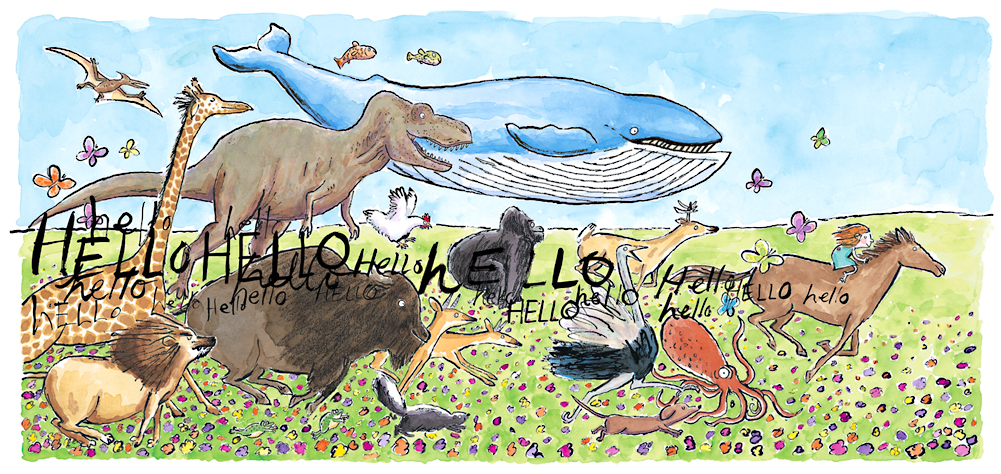Just how many times did the news media make mistakes in reporting the tragic events at the Boston Marathon or the ricin-laced letters to government officials? The answer is: too many. Between the implicit bias repeatedly stated on CNN that law enforcement officials were looking for a "dark skinned man, possibly African American" in a dark hooded sweatshirt, to the misinformation about the certainty of the letters testing positive for ricin, it is no wonder that our students were confused about the facts.
The
Huffington Post reported
Al Sharpton calling John King's comments on CNN about a "dark-skinned male" shameful, and
Politico described it as "
the media's marathon meltdown." The implicit bias in reporting the Boston teen,
Salah Eddin Barhoum, as a bombing suspect on the Internet and the front page of the
New York Post was front and center. This young man was afraid to leave his house. All of this harkens back to the
Richard Jewell case at the summer 1996 Olympic games in Atlanta, Georgia. Jewell went from heroic security guard to suspect and then back to hero. The media was ruthless in its pursuit of Jewell, who was innocent all along.
Given all of these scenarios, we decided to make a concerted effort to help our students better understand the news. To do this, we used several videos from the
Newseum Digital Classroom. Each of the dozen
video lessons available for education is an excellent starter for an open and frank discussion about problems in reporting. The site also provides a list of essential questions for each video to use as a guide.
The first video we showed was "
Getting It Right." It documents many of the errors in fact that have occurred over the last several decades. The kids were in awe over the number of mistakes made by the media, and perhaps the most impressionable was the error about the assassination attempt on President Ronald Reagan. They were equally receptive to the video on "
Bias" and the often lack of objectivity in reporting the news.
Most students, and perhaps adults, don't realize that the news media is controlled by a small group of companies. The competition for top ratings, for being first, or for getting exclusives can push the need to rush a story onto the air without due diligence in checking the facts.
The infographic from
FastCoDesign shows that 90% of media is produced by a handful of "
Mega Companies," making the competition for viewership fierce. The consolidation of the news industry went from 50 companies in 1983 to just 6 in 2011. Perhaps more outstanding is the statistic that roughly 232 media executives control the media for approximately 277 million Americans. That's power, and it's all the more reason that we need to have our students question the news for accuracy and integrity.
Today, these news agencies are not only competing against each other, but also against individuals using social media. We don't have to wait for the evening news to get the scoop. Most often, someone has already tweeted it out in real time. Take a look at the infographic "
Social Media and News Consumption for 2012" from
State of the Media, from the Pew Research Center's Project For Excellence in Journalism.
There's no denying that mobile devices and the social media factor have changed the way we get the news. Additionally, our students could easily be apart of the "news-making." The idea that information can surface from anywhere is all the more reason to constantly encourage our students to be vigilant about the source of the stories. This is no different from the skills we teach them when they're researching for our classes, and we should build these same skills into their learning to decipher the news for fact and fiction.
Interestingly enough, within one year, the outlook regarding the news has changed again. In the updated study, it's apparent that economics is a major player in the news industry. Have the students compare the "
2013 The State of the News Media: The Challenges Intensify" infographic with that of 2012.
Lastly, the video "
Why the News Isn't Really the News" is a thought-provoking look at how news agencies, or the "mega companies," get the latest information. It's a cynical look at the news-making from
Ryan Holiday, the author of
Trust Me, I'm Lying: Confessions of a Media Manipulator. In the video he "
shares a bit about
how he has manipulated media to get bogus, anonymous stories to the
front-page of news media outlets." He questions whether news stories
can be trusted since the way news outlets get their stories is flawed. Holiday leaves us with the thought that "
the news may not really be the news at
all."
One thing is certain, if we want our students to contribute to the news or challenge its validity, we need to make it an active part of our classroom instruction on all grade levels. Questioning the news is current events at its core.
Other resources on news literacy:



























